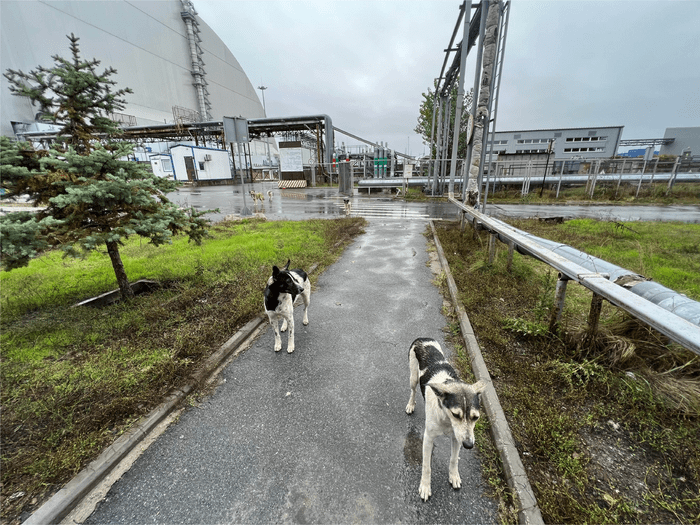New research has studied hundreds of the free-wheeling dogs that roam the ruins of the Chernobyl nuclear power plant and found that exposure to radiation may have made them genetically distinct from other dogs elsewhere in the world.
Following the Chernobyl nuclear disaster on April 26, 1986, around 120,000 people living in the surrounding area and the nearby city of Pripyat were forced to evacuate and abandon their homes. This included many pet dogs who, against all odds, managed to establish a sturdy population that still lives in the irradiated land that surrounds the decaying power plant.
In a new study, scientists looked to gain a deeper understanding of the unusual dog populations living around Chernobyl in light of the harsh environmental contamination that many are exposed to on a daily basis.
With the help of blood samples collected from the stray animals between 2017 and 2019, they genetically analyzed 302 dogs from populations living within the power plant itself, as well as those 15 to 45 kilometers (9.3 to 27.9 miles) from the disaster site.
Chernobyl dogs living outside the New Safe Confinement Structure, which was built to contain radioactivity from the explosion of reactor four. Image credit: Clean Futures Fund+
Just by looking at the DNA of the dogs living close to Chernobyl, it was clear they were genetically different from pets living elsewhere in the world, which the researchers believe is a reflection of the ionizing radiation they’ve been exposed to for generations.
In total, the new research found that this population contains 15 complex family structures that were unique compared with other dogs. However, it’s also clear that the dogs move around the different areas and breed freely with one another.
“I think the most remarkable think about the study is that we identify populations of dogs living in and in the shadow of the reactor, and we can tell who those dogs are just by looking at their DNA profile. To think of families living in places like near spent fuel rods is incredible and speaks to the resilience of dogs as a species,” Elaine Ostrander, study author and geneticist at the NIH’s National Human Genome Research Institute, told IFLScience.
“We also find that the dogs living in the exclusion zone now are likely descendants of pets from people that fled the area when the explosion happened. We can see the history of those pets etched in the DNA of dogs living in the exclusion zone today,” explained Ostrander.
Many of the Chernobyl dogs find shelter in abandoned buildings or construction zones within the nuclear exclusion zone. Image credit: Jordan Lapier
By the latest count, up to 800 semi-feral dogs may have been living in the land around Chernobyl, including the highly contaminated areas such as the Chernobyl New Safe Confinement structure.
The hounds are categorized as semi-feral as they do have some run-ins with humans. Workers and researchers in the area are known to feed the animals, while vets occasionally visit the area to update their vaccines and treat whatever medical problems they have.
Now this research has shown it’s possible to reliably distinguish the different populations of Chernobyl dogs, the researchers hope to look to see whether the genetic differences are having an impact on their health, appearance, and behavior. It could even shine a light on genetic mutations that help animals to survive in the face of radiation, the researchers say.
“Ideally, we’d like to find variants that the DNA has acquired over the 15 generations since the accident that permit survival of the high radiation exposure versus low radiation exposure environment,” explained Ostrander.
Free-living dogs in Chernobyl. Image credit: Tim Mousseau
All of this is still in its relatively early days, but the researchers were extremely pleased to show how super-detailed genetic analysis can now be carried out even on a rag-tag gang of stray dogs.
“The next stage of this study will involve increasing our magnification to the level of the entire genome and its architecture. Once again, I can’t emphasize how revolutionary this is. We have been able to do this kind of study for humans and lab animals where budgets are high. We are now at the stage where this technology can be applied to just about any system in any place,” added Tim Mousseau, study author and Professor of Biological Sciences at the University of South Carolina.
The paper is published in Science Advances.
Source Link: Dogs Of Chernobyl Are Now Genetically Different To Others In The World
